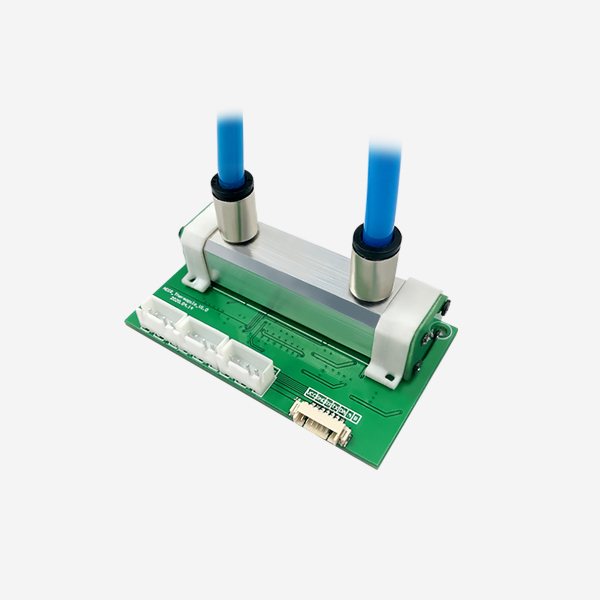Ndir Sensor
One of the most reliable and accurate technologies employed for gas detection is the Non-Dispersive Infrared (NDIR) sensor. This article explores the NDIR sensor technology, its working principle, applications, advantages, and future prospects.

Working Principle
The NDIR sensor is a non-dispersive infrared sensor. The NDIR sensor is composed of infrared light, sample chamber and infrared detector. When a particular gas enters the sample chamber, infrared light passes through it. The target gas molecules absorb specific infrared wavelengths, causing the intensity of light reaching the detector to decrease. By measuring this attenuation, the sensor determines the concentration of the gas.
Applications
NDIR sensors find extensive applications in various industries, including:

a) Industrial safety: the use of NDIR sensors in hazardous environments such as refineries, chemical plants and mining operations.
b) Environmental Monitoring: These sensors play a crucial role in monitoring air quality, ensuring compliance with emission regulations, and detecting greenhouse gases.
c) Indoor Air Quality :NDIR sensors monitor indoor air pollutants such as carbon dioxide (CO2), volatile organic compounds (VOCs) and other harmful gases.
d) HVAC Systems: We use NDIR sensors with ventilation systems to control ventilation rates and optimize energy efficiency.
e) Medical Applications: We use NDIR sensors in medical devices for breath analysis, anesthesia monitoring and the detection of certain medical gases.
Advantages
NDIR sensors offer several advantages over other gas detection technologies, including:

a) High Sensitivity: NDIR sensors can detect gases in low concentrations, typically down to parts per million (ppm) or parts per billion (ppb) levels.
b) Specificity: Each NDIR sensor is designed to detect a specific gas, enabling selective and precise monitoring.
c) Stability and Longevity: NDIR sensors exhibit excellent long-term stability, making them suitable for continuous monitoring applications.
d) Fast Response Time: These sensors provide real-time results, enabling prompt action in case of gas leaks or hazardous situations.
e) Low Power Consumption: NDIR sensors are energy-efficient, making them ideal for portable and battery-powered devices.
Future Prospects

On the technical side, NDIR sensors continue to evolve and improve. Key areas of development include:
a) Enhanced Selectivity: Further refining NDIR sensor designs to minimize cross-sensitivity and improve specific gas detection.
b) Miniaturization: Development of smaller NDIR sensors for integration into wearable devices, IoT applications, and handheld gas detectors.
c) Multi-Gas Detection: Advancements aiming to create NDIR sensors capable of simultaneously detecting multiple gases, offering comprehensive monitoring capabilities.
d) Lower Cost: Ongoing efforts to reduce manufacturing costs will make NDIR sensors more accessible to a wide range of industries and applications.
e) Integration with Smart Systems: Integration of NDIR sensors with smart systems and data analytics for advanced monitoring, predictive maintenance, and real-time alerts.
Conclusion
NDIR sensors have become indispensable in gas detection applications due to their precision, reliability, and wide range of applications. From industrial safety to environmental monitoring and indoor air quality, NDIR sensors provide accurate and real-time gas concentration measurements. As technology advances, we can expect NDIR sensors to play an increasingly important role in ensuring safety, improving air quality, and optimizing various industrial processes.